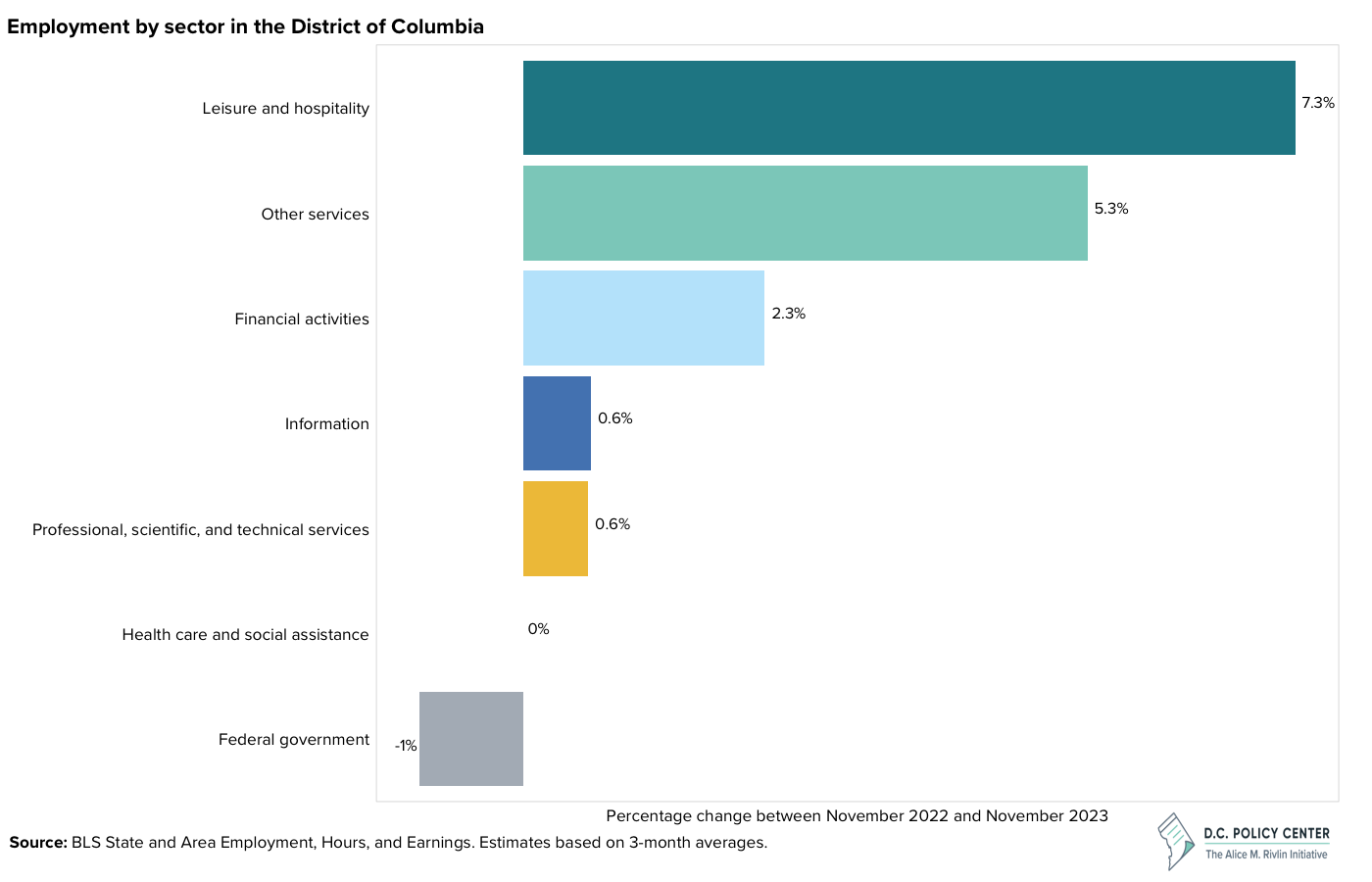Before the holidays, the Bureau of Labor Statistics released its preliminary employment by sector estimates for November 2023. The data show that, between November 2022 and November 2023, two traditionally important sectors for the District’s economy — the federal government and the professional, scientific, and technical services sector —experienced very weak or no employment growth. Meanwhile, the leisure and hospitality sector continued its long bounce back from the pandemic.
Over the past year, employment in the federal government contracted by 1 percent. In numbers, the federal government remains 1,400 jobs below its November 2022 level and 4,000 jobs below its March 2020 level. The loss of federal employees is not new for the District. In the past, the city has made up for the shrinking federal workforce by expanding private sector employment.
The federal government’s real impact on the District’s economy has been the shift of job activity away from the city, as a sizable portion of the District’s federal workforce continues to work from home. The federal government—which has in the past been credited for making D.C. “recession proof”— is now prolonging the negative effects of the COVID-19 pandemic on the District’s economy.
The professional, scientific, and technical services sector has not fared much better. Over the past year, it grew at 0.6 percent. The sector is now 1,300 jobs above its November 2022 level and 1,900 jobs above its March 2020 level. But these numbers should be treated with care since they are not statistically significant. As the chart shows, the only two sectors that fared worse over the past year are the health care and social assistance sector and the federal government. Before the pandemic, the professional, scientific, and technical services sector had a long-term growth rate of almost two percent.
The leisure and hospitality sector has performed the best of any of the sectors shown– growing at a 7.3 percent clip over the last year. And yet, despite its recent growth, the sector remains 2,900 jobs below its March 2020 level—which speaks to how hard COVID-19 hit the sector.
Data Notes
- The data are seasonally adjusted. The estimates for November 2023 are preliminary and subject to revision.
- The percentages shown in the chart are calculated using the average number of jobs in a sector for September, October, and November.
